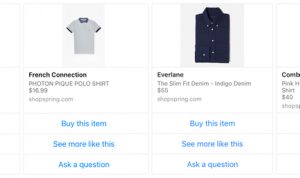Insights for optimizing first-party data, testing alternative identifiers, measuring success through customer lifetime value and more.
Google’s full deprecation of third-party cookies is right around the corner. Time is running out to get all those well-laid marketing plans off the whiteboards and into action. No matter where your company is at in the post-third-party preparation curve, the truth is that we won’t fully realize the impact on our marketing efforts until Google finally flips the switch and we head into the unknown.
With that in mind, I’ve put together a playbook (or a checklist) to focus on key areas in the upcoming quarters and make sure your marketing plans are solid.
Scrub your first-party data
More than ever, first-party data hygiene is crucial to ensure accuracy and relevance and maintain privacy compliance for all users. Data hygiene is more than just cleaning and organizing your customer data. To keep your first-party data in top form, it’s critical to conduct regular audits to identify any inaccuracies, duplications or outdated information. Be proactive and put this into practice. Schedule your data hygiene regularly (e.g., monthly, quarterly or bi-annually).
Beyond removing outdated or duplicate records, implement processes to validate the quality of incoming data and standardize data formats across your database. All this helps in data accuracy and more effective segmentation that can benefit from identifying inactive or less engaged customers for re-engagement campaigns.
Enhance engagement with zero-party data
Maximize the collection of zero-party data at each customer interaction. While first-party data unveils “who” your customers are, zero-party data delves deeper, capturing their direct input on preferences and engagement desires.
Customers often share this explicit information in return for tailored experiences, spot-on recommendations or exclusive benefits, enriching the personal connection between your brand and its audience.
Find your marketing sweet spot within the identity funnel
Conduct a comprehensive assessment of your marketing initiatives to pinpoint where identity plays a pivotal role. It’s essential to discern at which stage in the funnel your advertising investment is utilized and yields the most return.
Consider if your business truly benefits from targeting at the individual level or if broader targeting, like at the household or designated market area (DMA) level, could suffice for revenue generation without incurring the additional costs associated with granular one-to-one marketing.
Undertaking this analysis is neither swift nor straightforward. Investing time with data analysts, whether in-house or outsourced, is invaluable for delineating the components of your marketing that depend on identity data.
A common oversight among marketers is the assumption that one-to-one marketing is crucial despite evidence from conversion metrics indicating that top-of-funnel awareness and mid-funnel targeting often deliver superior return on ad spend (ROAS). Identity’s significance may vary; it is crucial, but not always to the degree presumed.
Your objective should be to identify the optimal intersection — your sweet spot — where your advertising and data expenditures are allocated most efficiently, focusing on the channels and campaigns that provide the greatest benefit for the cost.
Test independent identifiers outside of the walled gardens.
By now, you’ve likely started testing alternative identifiers to prepare for a future without third-party cookies. While many indie IDs fall outside the walled gardens, I’ve selected a few alternative identification solutions that have emerged as leaders. These alternatives aim to balance user privacy with the need for personalized advertising and measurement.
Below is a short list of the primary digital marketing IDs and frameworks that are positioned to replace third-party cookie tracking:
Unified ID 2.0 (UID 2.0)
First launched by The Trade Desk, UID 2.0 is now its own entity and governed independently from The Trade Desk. UID 2.0 uses encrypted and hashed email addresses as identifiers, which users provide when they log in or register across millions of websites.
It’s designed to be an open-source and interoperable framework that requires user consent. From a privacy perspective, It includes transparency and user control, allowing users to view, edit or opt out of their UID at any time.
Authenticated Traffic Solution (ATS)
Developed by LiveRamp, ATS enables publishers to attach identity information to ad requests using encrypted and anonymized email addresses, facilitating people-based marketing without third-party cookies.
Leveraging the largest independent identity graph, LiveRamp can assign individuals and households with anonymized, pseudonymous identifiers, which require user consent and ensure compliance with privacy regulations.
ID5’s Universal ID
ID5’s solution hinges on its deep reach and partnerships with publishers worldwide. They’ve developed a shared identity service for publishers, advertisers and adtech platforms, leveraging their extensive publisher relationships.
It offers a standardized ID usable across various sites and platforms, enhances user identification, respects privacy and consent and complies with GDPR, CCPA and other privacy regulations.
Navigating measurement and attribution without third-party cookies
Accurate measurement and attribution have always been complex undertakings, and the phase-out of third-party cookies adds complexity. The rise in consumer privacy protection has resulted in even more significant signal loss, prompting marketers to move away from the legacy multi-touch attribution (MTA) or marketing mix modeling (MMM) as a means of assessing campaign performance.
With the diminishing reliability of ROAS in a cookie-less world, marketers should continue to shift away from these methods and gauge campaign success by looking at the incremental lifetime value (LTV) of customer relationships. Fundamentally, LTV estimates the profit expected from a customer over a long-term horizon, usually three to five years for many brands.
Historically, marketing success has often been channel-centric in its measurement. However, the channel’s contribution, such as that from a Meta campaign, is becoming less significant. After all, the customers drive revenue, not solely the platforms providing visibility.
As we adapt to increased signal loss and less transparent measurement systems, it’s logical to anchor measurement studies to lifetime value, not just the revenue by channel.
This shift also has implications for your attribution model. Many marketers are still anchored to outdated last-click attribution models, correlating transactions directly with the cost of customer acquisition (CAC) and cost per acquisition (CPA), where the acquisition could be a customer or a sale. These approaches can produce volatile results and misdirect attribution without considering the LTV, which provides insight into the customer’s value.
Neglecting LTV in attribution analysis could lead to overemphasizing acquiring customers who may not be the best fit for your business in the long run. Attracting numerous transactions through significant discounts doesn’t necessarily equate to a profitable customer base. The objective is to measure success against the potential to build a long-term, profitable customer base incrementally.
Preparing for what’s ahead
As we stand at the brink of a new era in marketing, it’s essential to embrace the changes ahead. This playbook is far from exhaustive, but my aim was to provide a top-level framework designed to act as another guidepost in this transition.
By prioritizing first-party data, investing in better insights, testing alternative IDs and conducting more in-depth measurement studies, we can turn a short-term disruption into a competitive advantage.
The post Google’s cookie deprecation: An essential marketing playbook for the post-cookie era appeared first on MarTech.
MarTech(11)
Report Post





